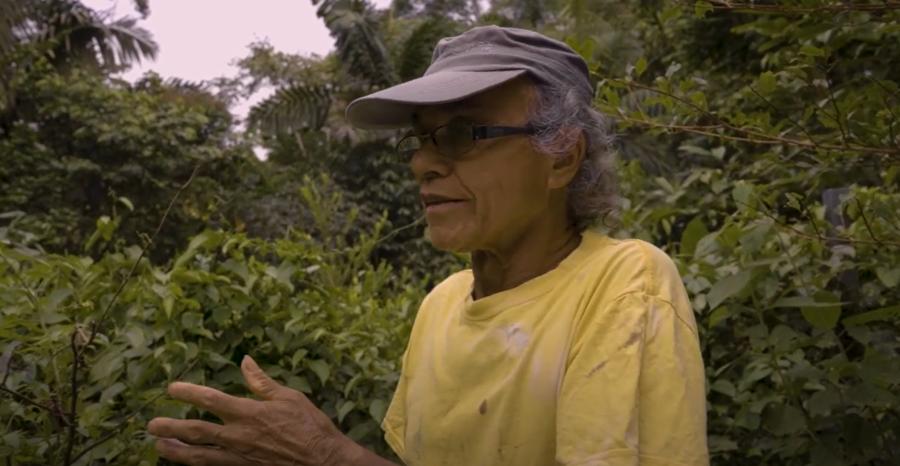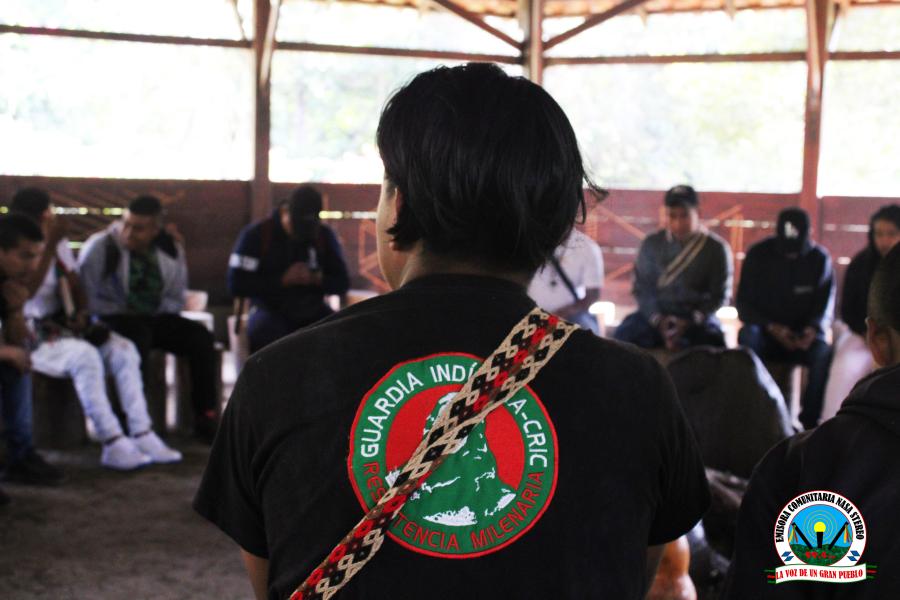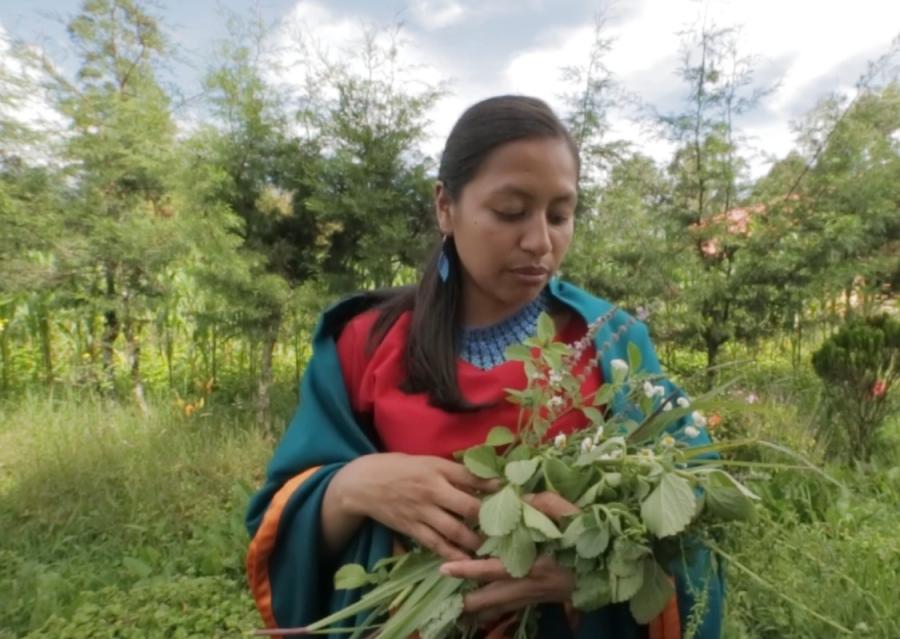
Amidst the strength and power of the Columbia and Spokane Rivers in the ancestral territories of the Spokane Tribe, there is a group of language warriors with the dream of keeping their languages alive. They run the Spokane Language House, which uses an immersion strategy to increase the number of fluent adult speakers.
There is an urgent need to increase the number of fluent speakers of the Np'oq͗ ínišcn language, which is a dialect of Salish. The Salish language is highly endangered and at risk of disappearing after years of oppression and erasure practices through boarding schools that wanted to eliminate the traditional ways of life of Native Americans. Students at these schools were taught in English and were punished for speaking their Native language.
Only a few years ago, there were just two Elders alive who could speak Np'oq͗ ínišcn fluently. Spokane Language House started a radical method to address the issue of language loss in the context of a few fluent living Elders. The school’s goal is to create the space to immerse adult learners in the Np'oq͗ ínišcn language, and for these learners to become mentors who can transmit the language to younger generations. The targeted group of adult language learners are between the ages of 20–30.
Sulustu, Executive Director of the Spokane Language House, was born and raised in Spokane and is a fluent speaker of Qalispé, Np'oq͗ ínišcn, English, and Spanish. He has been involved in language work for about 20 years and dreamed about a space to actively maintain his language. In 2019, Šitétkw joined the dream and contributed to facilitating this language learning space, becoming involved as a teacher. Šitétkw grew up on the Spokane Reservation and has been learning Np'oq͗ ínišcn and N ̆sel‛x̌čin for the last 10 years.
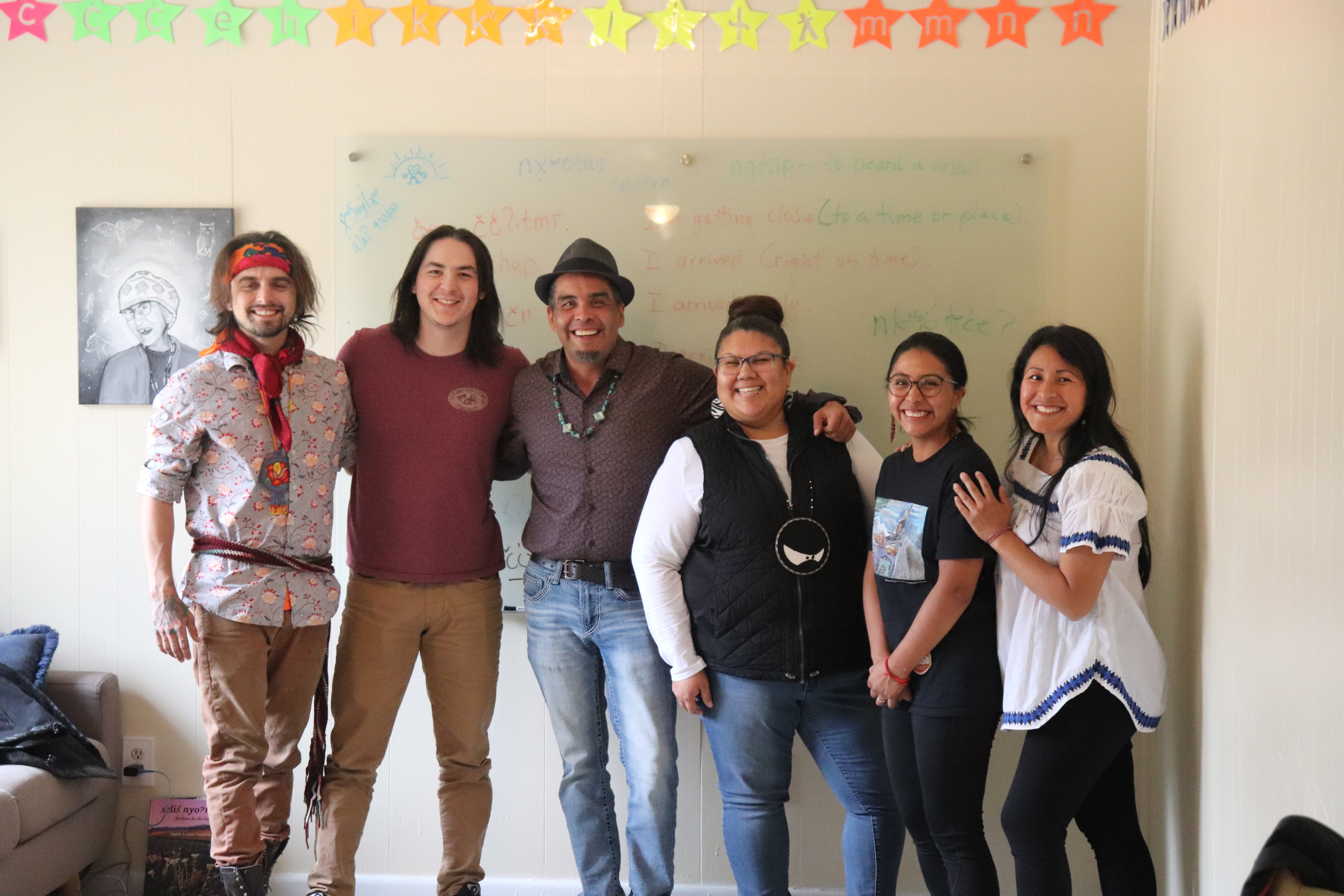
L–R: Spokane Language House Staff, Šitétkw, Ctapsqé, Sulustu, Pše, with Adriana Hernández (CS Staff) and Nati Garcia (CS Staff). Photo by Cultural Survival.
Other staff members have joined in the last few years. Pše grew up in Montana with her grandparents; both knew the Salish language but never taught it to her. She learned some words in Salish by ear, and she thought these words were in English until later when she learned Salish and she realized she already knew some of the words. More recently, Ctapsqé, who grew up on the reservation, joined the school as a teacher. Classes are currently being held
at Ctapsqé’s grandmother’s house until they find a more permanent location.
The Spokane Language House became a reality in the summer of 2018. Classes started with the first N1 introductory level. Initially, 10–15 students started learning the Np'oq͗ ínišcn language for 12 weeks. “The students expressed their feelings about how much their language meant to them and how learning their language changed their lives. It was beautiful to see their growth and healing. This language is very important for our hearts and healing, but it is important for the land because this is the language that the land speaks, that the animals speak, that the river speaks,” Šitétkw says.
The Spokane Language House has three levels: N1 (introduction), N2 (intermediate), and N3 (advanced). The teachers have not yet taught an N3 advanced level class; their goal is to teach the first class in October 2023. The intention is to have a group of adults committed to learning the language full time for two years, and the school is currently advocating for funding to pay full-time salaries to those learning the language. “You can’t learn the language in one hour a week; you have to have a full immersion . . . the students will come to the house [to] cook, clean, and do stuff entirely in the language,” Sulustu says, thus creating a learning experience for students and teachers who will support each other. At the end of those two years of full immersion, there will be new fluent speakers of the Np'oq͗ínišcn language for the first time in 50-plus years.
Methodology
The Spokane Language House implements a Natural Approach Method, which was developed by the Salish School of Spokane. This method aims to have an immersive classroom in a sequential order where students can build upon their vocabulary and use everything they have learned. “This method is hard because no grammar or alphabet is taught. The idea is to train the ears first and have the students familiarize themselves with the sounds by listening attentively, then repeating, then listening again, and repeating and pointing. Recognition and comprehension are essential in this phase,” Šitétkw says.
The Natural Approach Method aims to have them speak the language using the words they learned since the beginning of the lessons. Students struggle to learn through this method, but that struggle is what makes them connect all the pieces together. “We tell our new speakers, ‘you are babies, and that is okay; you are just starting to listen and speak.’ Many emotions come out such as shame, guilt, pride, joy, and some inherited emotions. It is so important to cultivate a safe environment for the students. Overall the whole learning experience is a very transformative process,” says Šitétkw. The immersive teaching process can be challenging for the teachers as well, as they do not speak in English, even when the students are struggling. The teachers encourage the students to express their frustrations and feelings in their Native language.
Storytelling is an important component of the learning process. It allows the students to figure out all the puzzle pieces, and the beauty of the process is that they do it themselves. It is difficult for adults to focus full time on language learning with work and family obligations, so it is crucial to fundraise for salaries for those learning the language full time. These adults are the ones who will carry and transmit the language to our children.
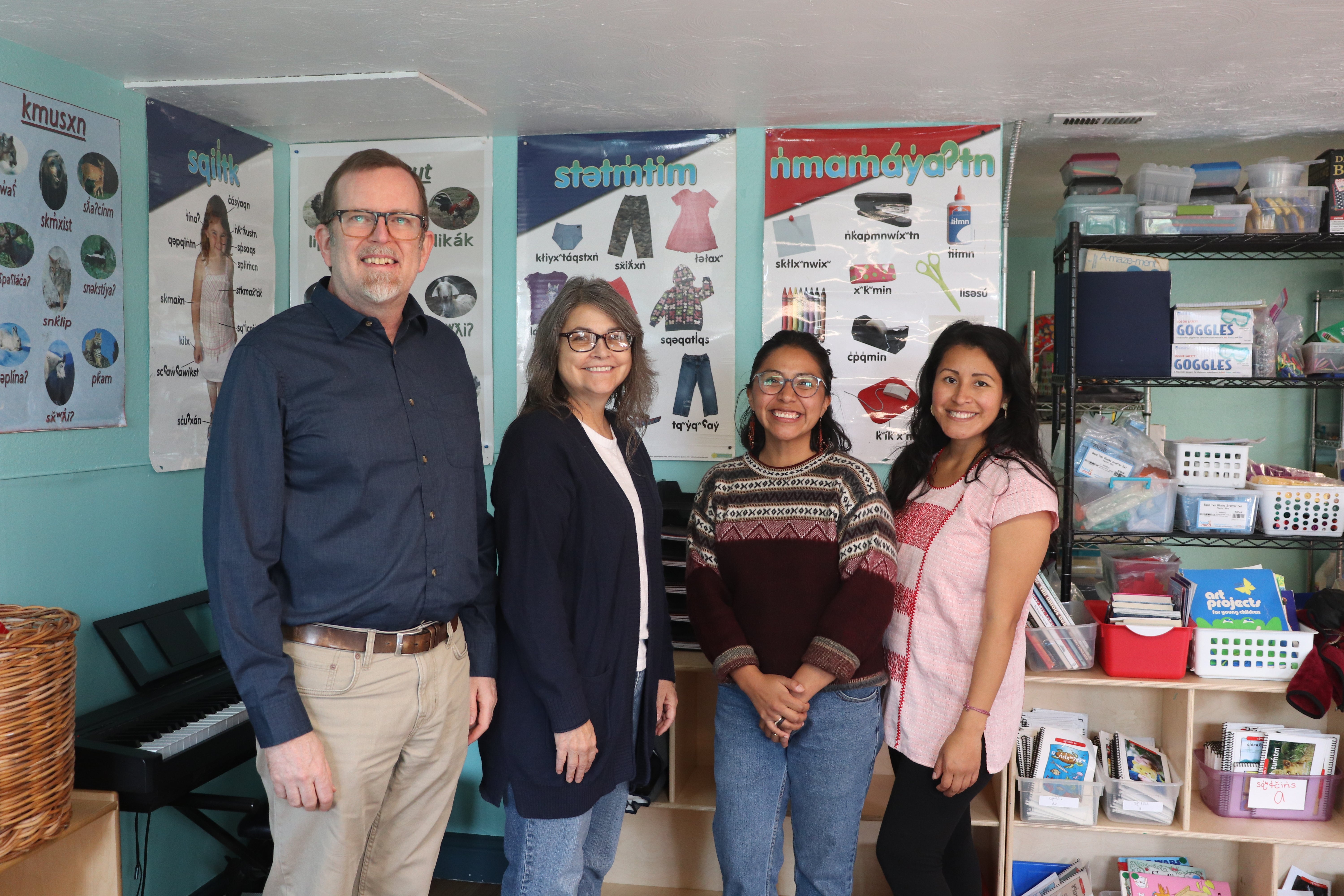
L–R: Christopher Parkin, LaRae Wiley, Adriana Hernández (CS Staff) and Nati Garcia (CS Staff) at the Salish School of Spokane. Photo by Cultural Survival.
Salish School of Spokane
Located in the city of Spokane, Washington, the Salish School of Spokane is a Native-led nonprofit that provides childcare and early childhood education in the Salish language. The Salish School of Spokane focuses on revi̓talizing the four Southern Interior Salish languages: n̓ səlxčin̓ (Colville-Okanagan), n̓ sélišcn̓ (Spokane-Kalispel), n̓xaʔm̓ xčin̓ (Wenatchee-Columbian), and sn̓čic̓úʔum̓šc̓n (Coeur d’Alene). Started by LaRae Wiley, a member of the Sinixt Arrow Lakes Band, and her husband, Christopher Parkin, the school opened its doors in September 2010. Year by year the school has grown and has had as many as 58 students. Since the pandemic, they have maintained an average enrollment of 33 students.
The Salish School of Spokane aims to educate children up to high school through the Salish language and ensure that children connect with their families, who they are, and where they come from through the language. While the school focuses on working with children, the staff also offers a community space for adults who want to learn the language, mainly parents of the children attending the school. The school additionally offers language classes to all staff members who work at the school.
At the Salish School of Spokane, all subjects (science, math, and music) are taught in the Salish language. The Salish School of Spokane envisions a learning environment where students are immersed in every aspect of the Salish language. Through a Natural Approach Method, the students learn Salish with limited use of English. Staff members at the school have spent hundreds of hours reviewing archives, translating materials, and developing a curriculum that has been shared with other grassroots language revitalization projects in Washington State and Montana. Parkin and Wiley believe in the power of exchanging ideas with other language revitalization initiatives and sharing materials, curriculum, ideas, and methods. They agree there is a need to facilitate a space where the initiatives increasing the number of fluent speakers share their resources with other Indigenous relatives because, in the end, it is all about acting now as the Indigenous language loss rates grow.
